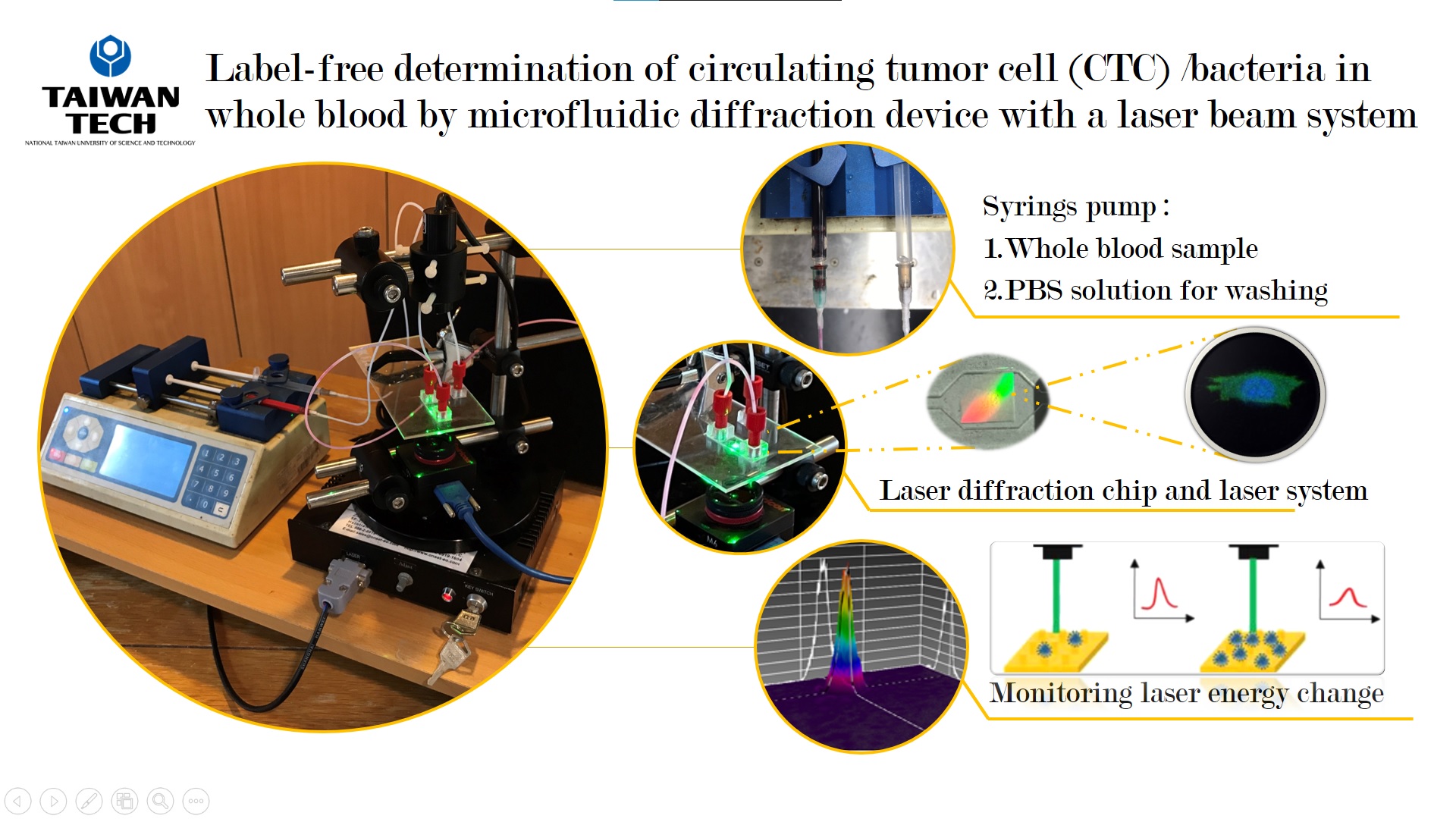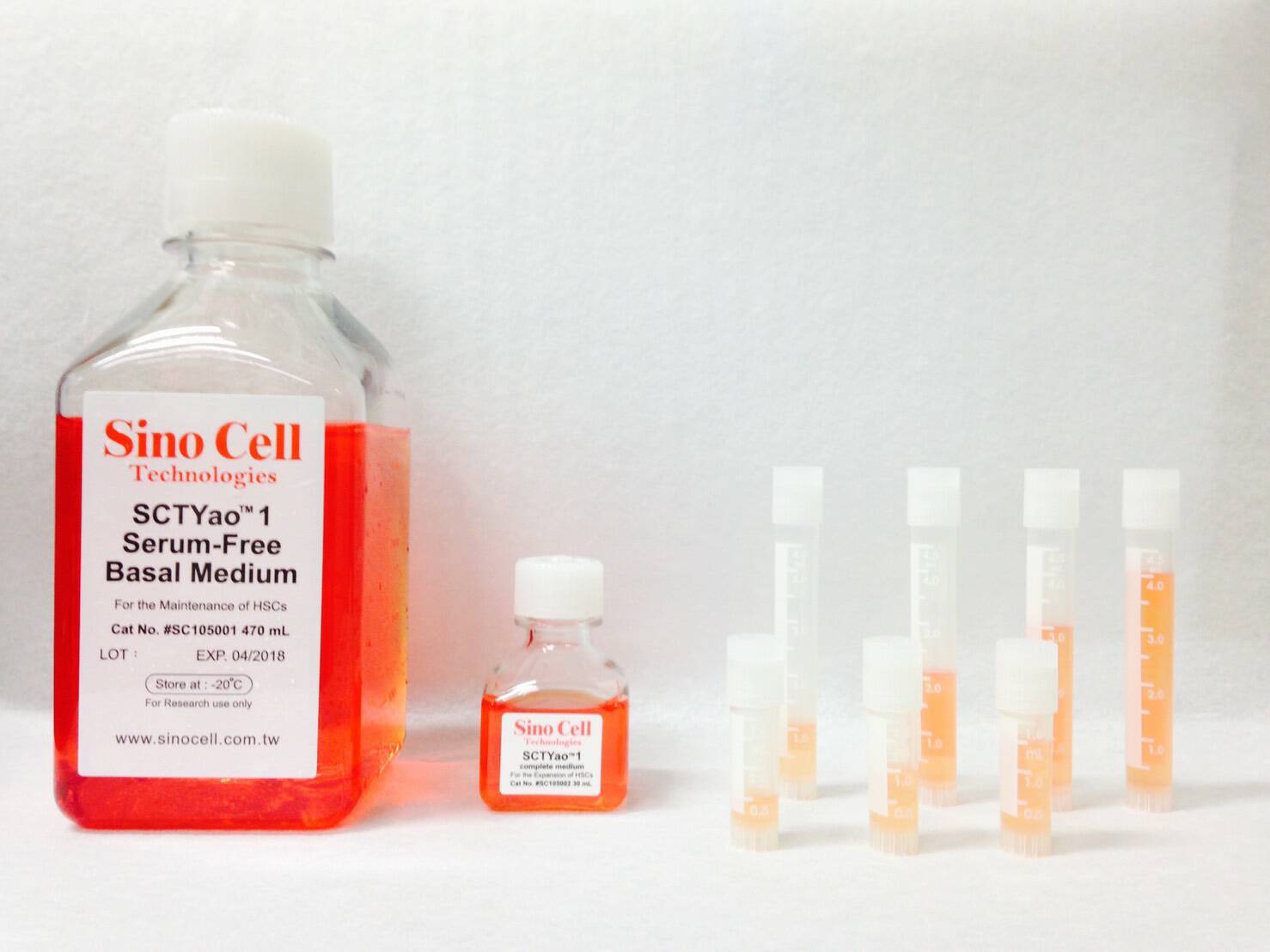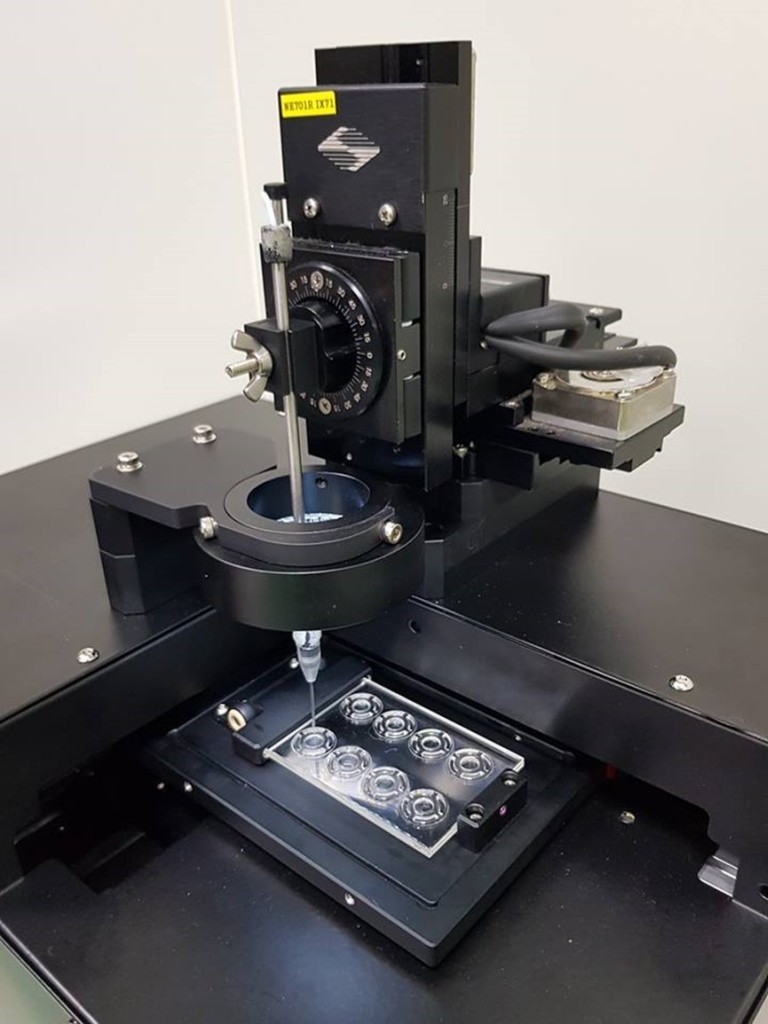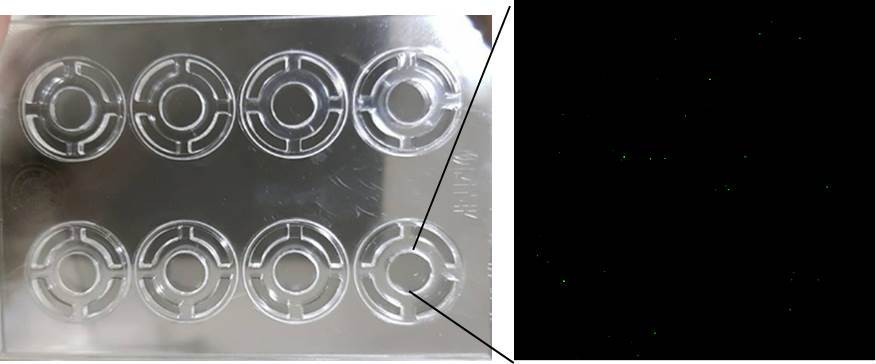| Scientific Breakthrough |
「Rare cell screening chip and automatic image analysis system」 consist of a Self-Assemblely Cells Array (SACA) chip, an automated image analysis system, and a cell needle grabbing.
The major technology, SACA chip, is a microfluidic chip that uses gravity, evapotranspiration, and liquid lateral force to form large area single-layer cells. Each chip has 8 wells and can spread 2ml of whole blood in 5 minutes. Due to its low physical damage characteristics, the spiked tumor cell line has survival rate up to 90%, and the recover rate reach 85% under concentration 1:107 with standard fluorescence identification (2 positive, 1 negative). After that, the automated imaging system observe the numbers, morphology and relative position of the cells in the chip within 40 minutes. Finally, the selected micro-cells can be removed by cell needle grasping accessories for subsequent analysis, such as culture, genetic analysis or drug toxicology etc..
Existing technologies, such as SACA, image capture methods, and cell needle grasping techniques are patented.
CTC detection as example, SACA chip compare with commercial system such as Cell search and IsoFlux
SACACell searchIsoFlux
Cell viability90%Dead cellLiving cell
Cell countingUp to85%70%NA
Cell morphologyKeep cell imageNAKeep cell image
Cell isolationCell needle grabingNAmicrofluidics
As shown in the aforementioned table, SACA has advantages in the performance of each micro cell screening.
Therefore, this technology is very suitable for cancer-related personalized drug medical development.
The market value of personalized medicine treatment has now exceeded 50 billion US dollars, and it is estimated that it will reach 150 billion US dollars in 2025 which cancer treatment accounts about 50%. |
| Industrial Applicability |
本技術包含有細胞自組裝陣列晶片(Self-Assemblely Cells Array, SACA)、自動化影像分析系統、細胞針抓取等三項技術組合成「微量細胞篩選晶片暨自動化影像分析系統」。
其核心技術SACA chip是一個單純利用重力、蒸散力、液體側向拉力形成大面積單層排列細胞之微流體晶片,每一個晶片具有8個well,可在5分鐘內攤平約2cc全血進行觀察。由於其低物理傷害特性,經過混入並重新篩選之tumor cell line存活率高達90%,標準螢光辨識(2 positive, 1 negative)輔助下可在1:107的低濃度下達到85%的檢出率,再搭配自動化影像系統擷取細胞在晶片中的數量、形貌、相對位置等等資訊(約40分鐘)。最後可使用細胞針抓取配件將選定之微量細胞取出進行後續的分析應用,例如培養、基因分析、藥物毒理測試等等。
因此本技術非常適用於癌症相關之個人化藥物醫療開發
而個人化藥物治療市值目前已有超過500億美元,預估在2025年將會達到1500億美元,其中癌症治療佔了大約50%。 |







